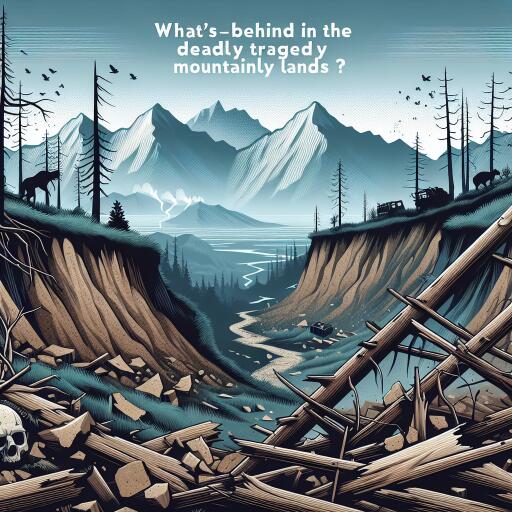
Exploring the Catastrophic Wayanad Landslides: A Deep Dive into the Tragedy
The serene landscape of Wayanad, nestled within the hilly terrains of north Kerala, was recently thrust into the spotlight for a harrowing reason. A devastating landslide, fueled by a combination of environmental fragility, extreme weather patterns, and human encroachment, claimed the lives of at least 150 individuals, leaving over 100 more injured. The calamity has once again raised pressing questions about the intricate dance between nature and human development.
The incident unfolded across the towns of Mundakkai, Chooralmala, Attamala, and Noolpuzha in Wayanad, disconnecting them from the outside world. Rescue operations were promptly arranged, with the Indian Navy, Army, and Air Force deploying teams to the affected areas, despite challenges like the collapse of a main bridge in Chooralmala which complicated access.
This recent disaster in Wayanad is not an isolated event but part of a disturbing trend of environmental catastrophes in the region. The memory of the 2018 floods, which claimed over 500 lives, still lingers, drawing parallels with the current landslide both in terms of the devastation and the extreme weather conditions that preceded it. Wayanad itself received an overwhelming 140 mm of rainfall within a 24-hour period, significantly more than the usual, with certain locations witnessing over 300 mm of rain, as reported by the India Meteorological Department (IMD).
Experts pinpoint the warming of the Arabian Sea as a crucial factor behind the extreme rainfall triggering the landslide. A deep mesoscale cloud system formed off the Arabian Sea coast, bringing unprecedented rainfall to Kerala’s districts, including Wayanad. This extreme weather event is a stark reminder of the increasing instability brought about by climate change, particularly in regions like the southeast Arabian Sea, which has seen rising temperatures.
The perilous geography of Kerala, where nearly half the state is comprised of hills and mountainous regions with steep slopes, exacerbates the risk of landslides during heavy rains. Despite recommendations from the Western Ghats Ecology Expert Panel to declare a significant portion of the Western Ghats as an environmentally sensitive area, due to its rich biodiversity, such preventive measures have not been fully implemented.
The conversion of lush forest areas into rubber plantations has also contributed to the problem, weakening the soil’s ability to hold together during heavy rainfall. Additionally, rampant construction in vulnerable areas without adequate consideration of the changing climate and rainfall patterns has heightened the risk of such disasters. These activities not only disrupt the natural landscape but also place more lives in jeopardy during extreme weather events.
Historically, Kerala has been no stranger to the destructive forces of nature, with multiple incidents of landslides and floods in recent years. The 2020 landslide in Idukki and the floods and landslides in Kottayam and Idukki districts in 2021 are grim reminders of the state’s vulnerability. Moreover, a report indicated that Kerala experienced the highest number of major landslides in India over a seven-year span, underscoring the urgent need for a comprehensive approach to land management and climate adaptation.
The repetitive nature of these tragedies highlights the critical gaps in our approach to managing environmental risks and the necessity of integrating climate resilience into development strategies. As the local and national teams continue their rescue and recovery efforts in Wayanad, the broader conversation must pivot towards sustainable living practices, stricter land use policies, and the proactive implementation of climate adaptation measures to mitigate future risks.
In the face of mounting evidence, the tragic events in Wayanad serve as a wake-up call for collective action against the backdrop of climate change. It emphasizes the importance of listening to scientific warnings and adopting an eco-conscious mindset to safeguard vulnerable communities from the increasing frequency and intensity of natural disasters.





Leave a Reply